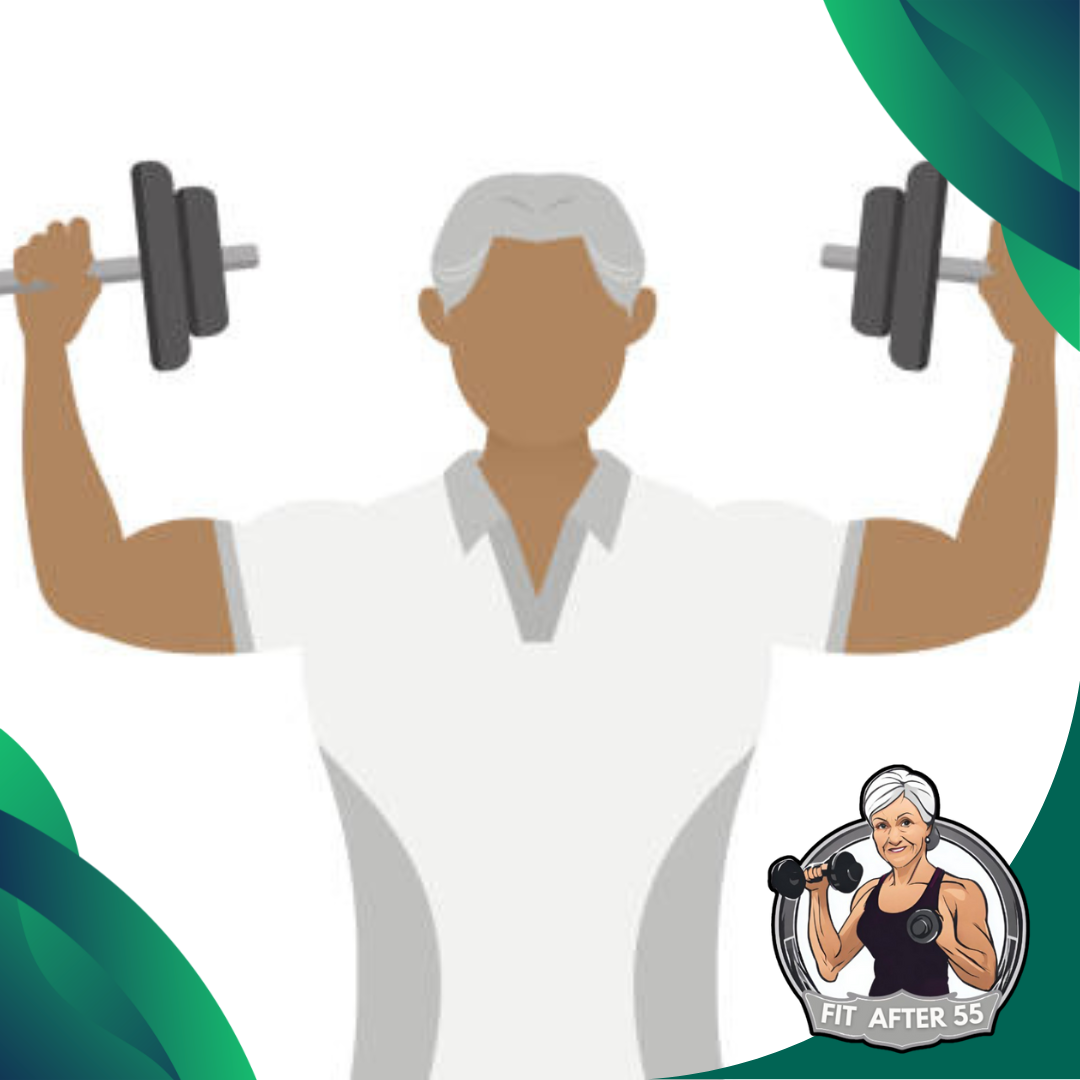Ever feel a bit wobbly or less steady on your feet than you used to? You’re not alone! As we age, our balance can take a hit, but there’s good news—strength training can help you find your footing again. It’s not just about building muscle or looking strong; strength training has some amazing benefits for your stability and coordination. By working on your muscles, joints, and even your reaction time, strength training helps you stay steady, confident, and ready to tackle whatever comes your way. Let’s dive into how a bit of weight lifting or simple bodyweight exercises can make a big difference in keeping you balanced and sure-footed!
How Strength Training Improves Balance: Key Benefits for Stability and Coordination
Falls that result in bone injuries are among the most significant health concerns for seniors in our country. Discovering that strength training can improve balance gave me an even greater reason to focus on building overall strength. Strength training does far more than just build muscle—it’s a powerful way to enhance overall fitness, including balance and stability.
When you engage in weightlifting or bodyweight exercises, you’re not just increasing muscle strength; you’re also boosting your stability and coordination. These exercises help develop core strength and body awareness, both of which are crucial for maintaining balance and preventing falls.

Strength training can boost your balance by working your core muscles, lower back, and legs. These are key areas that help you stay steady on your feet. As you get stronger, you’ll notice improvements in your posture and ability to move smoothly through daily activities.
Regular strength workouts can help people of all ages. For older adults, it can prevent falls and maintain independence. Athletes use it to become more powerful and agile. Even if you’re just starting out, adding some strength exercises to your routine can make a big difference in how well you balance.
Key Takeaways
- Strength training improves balance by targeting core, back, and leg muscles
- Regular strength workouts enhance stability for people of all ages and fitness levels
- Combining strength and balance exercises can help prevent falls and boost overall fitness
The Science of Strength Training and Balance
Strength training affects your body in ways that improve balance. It changes how your muscles work and how your brain controls movement. These changes help you stay steady on your feet.

Neuromuscular Adaptations
When you do strength training, your muscles and nerves learn to work better together. This is called neuromuscular adaptation. Your brain gets better at telling your muscles what to do.
Your muscles also get stronger and faster. They can react more quickly when you start to lose your balance. This helps you catch yourself before you fall. Strength training also improves something called motor unit recruitment. This means your body can use more muscle fibers at once. The more muscle fibers you can use, the more stable you are.
Proprioception and Kinesthetic Awareness
Proprioception is your body’s ability to sense where it is in space. Kinesthetic awareness is how well you can feel and control your body’s movements. Strength training improves both of these.
When you lift weights, you must focus on your form. This makes your body more aware of how it’s positioned, and over time, this awareness becomes automatic. Better proprioception and kinesthetic awareness help you:
- Know where your feet are without looking
- Adjust your posture quickly
- Move more smoothly
These skills are key to good balance. They help you avoid falls and stay steady in different situations.
Core Stability and Postural Control
Core stability and postural control are key to improving balance through strength training. They work together to enhance your body’s ability to maintain equilibrium during various movements and activities.
The Role of Core Muscles
Your core muscles play a crucial part in maintaining balance and stability. They include the transverse abdominis, multifidus, diaphragm, and pelvic floor muscles. These muscles work together to support your spine and keep your body stable.
A strong core helps you:
- Maintain proper posture
- Distribute force evenly throughout your body
- React quickly to changes in position
By strengthening your core, you improve your body’s ability to control movements and respond to sudden perturbations. This enhanced control leads to better balance in sports and daily activities.

Improving Posture Through Strength Training
Strength training can significantly improve your posture, which is essential for maintaining balance. Good posture aligns your body properly, reducing strain on muscles and joints.
Key benefits of strength training for posture include:
- Increased muscle strength in the back and abdomen
- Better alignment of the spine
- Improved body awareness
Core stability training programs focus on increasing trunk control and stability. These exercises help your nervous system predict and respond to balance loss more effectively. By incorporating strength training into your routine, you can enhance your postural control and overall balance. This leads to better performance in sports and reduced risk of falls in daily life.
Functional Strength Training
Functional strength training focuses on movements that mimic everyday activities. It helps improve balance by working multiple muscle groups at once. This type of training uses exercises that challenge your stability and coordination.
Exercise Selection for Balance Improvement
Pick exercises that target balance and stability. Single-leg movements are great for this. Try single-leg deadlifts or squats. These force you to maintain balance while moving.
Lunges and step-ups also boost balance. They work your legs and core while challenging your stability. Add rotational exercises too. Wood chops or Russian twists engage your core and improve coordination.
Use unstable surfaces to increase difficulty. Balance boards or stability balls make exercises harder. This forces your body to work harder to stay steady. Start with basic moves and progress slowly. Remember to include exercises for all major muscle groups. Strong legs, core, and upper body all contribute to better balance.
Compound Movements and Balance
Compound exercises work for multiple muscle groups at once. They’re great for improving balance and coordination. Squats, deadlifts, and push-ups are good examples. These moves require your body to work as a unit. This mimics real-life movements. You’ll build strength and improve balance at the same time.
Try adding weights to increase the challenge. Kettlebell swings or dumbbell thrusters are good options. These exercises force you to control the weight while moving. Don’t forget about unilateral exercises. Single-arm rows or one-arm overhead presses work one side at a time. This helps fix strength imbalances and improves overall stability.
Mix up your routine to keep challenging your body. This prevents plateaus and keeps you making progress.
Aging, Strength Training, and Balance

As you get older, your balance may decline. Strength training can help improve your stability and reduce fall risks. It’s important to adapt exercises to your needs as a senior.
Challenges of Aging on Balance
As you age, several factors can impact your balance. Muscles tend to weaken over time, making it more challenging to maintain stability. Additionally, joints can become stiffer, reducing your range of motion and flexibility. A slower reaction time also adds to the difficulty, making it harder to quickly adjust and stay steady in response to changes in your environment.
These changes can make everyday tasks more difficult. Things like walking or climbing stairs may feel riskier. You might worry more about falling. But don’t lose hope! You can take steps to improve your balance at any age.
Adaptive Training for Seniors
Strength training can help you regain balance and confidence. You don’t need to lift heavy weights to see benefits. Even light resistance exercises can make a big difference. Start with exercises that use your body weight. Wall push-ups and chair squats are good options. As you get stronger, you can add light dumbbells or resistance bands.
Aim for two strength training sessions per week. Focus on exercises that work your legs and core. These muscles are key for balance. Remember to start slow and listen to your body. If something hurts, stop and ask a doctor or trainer for help.
Program Design Principles
Effective strength training programs for balance improvement rely on key design principles. These include careful periodization, progressive overload, and targeted assessments to track progress and adjust exercises.
Periodization and Progression
Periodization breaks your training into phases to maximize results. Start with a base phase to build foundational strength. Focus on compound exercises like squats and deadlifts.
Next, move to a strength phase. Increase weight and lower reps. Add balance challenges like single-leg exercises. Finally, enter a power phase. Include explosive movements like jump squats. This improves fast-twitch muscle fibers crucial for balance reactions.
Progression is vital. Gradually increase the difficulty by:
- Adding weight
- Changing tempo
- Reducing stability (e.g. using unstable surfaces)
- Increasing movement complexity
Track your progress weekly. Adjust as needed to keep challenging yourself safely.
Balance and Mobility Assessments
Regular assessments guide your training plan. They highlight areas for improvement and track progress. Key balance tests include:
- Single-leg stance test
- Functional reach test
- Timed up and go test
For mobility, assess:
- Ankle dorsiflexion
- Hip flexion and extension
- Thoracic spine rotation
Perform these tests every 4-6 weeks. Use results to adjust your program. If single-leg balance improves, add more challenging exercises like single-leg deadlifts. Combine strength and balance work. Add balance challenges to strength exercises. For example, do dumbbell shoulder presses while standing on one leg.
Risk Reduction and Injury Prevention
Strength training plays a crucial role in reducing the risk of injuries and falls. It helps improve muscle strength, joint stability, and overall body control. These benefits directly contribute to better balance and coordination in daily activities.
Preventing Falls Through Strength Training
Strength and balance training can significantly reduce your risk of falling. Focus on exercises that target your leg muscles and core. Squats, lunges, and calf raises are excellent choices to build lower body strength.
For balance improvement, try single-leg stands or heel-to-toe walks. These exercises challenge your stability and help you maintain better control of your body.
Incorporate resistance band exercises to improve both strength and flexibility. Use them for leg extensions, arm pulls, and lateral movements. Remember to start slowly and gradually increase the difficulty of your exercises. This approach helps prevent overexertion and reduces the risk of injury during training.
Corrective Exercises for Muscular Imbalances
Muscular imbalances can lead to poor posture and increased injury risk. Identifying and addressing these imbalances through strength training is essential for injury prevention.
Start by assessing your posture and movement patterns. Look for areas of tightness or weakness. Common imbalances include weak glutes, tight hip flexors, and rounded shoulders.
To address these issues, focus on exercises that target underactive muscles:
- Glute bridges for weak glutes
- Wall slides for rounded shoulders
- Hip flexor stretches for tight hips
Incorporate unilateral exercises like single-leg deadlifts or Bulgarian split squats. These help identify and correct strength differences between your left and right sides. Regularly performing these corrective exercises can improve your overall muscle balance and reduce your risk of injuries during daily activities and workouts.

Fun Fact
Did you know that strength training is a low-impact exercise that still packs a punch when it comes to improving balance? Unlike high-impact activities that can strain your joints, strength training is gentle on your body while offering significant benefits for stability and strength. It’s a perfect way to build a strong, steady foundation without putting unnecessary stress on your joints—a true win-win for staying active and healthy!
Strength Training for Balance: A Dynamic Duo
Strength training is an effective way to improve balance and stability, especially as we age. By strengthening key muscle groups—like the core and legs—and enhancing joint support, strength exercises help keep us steady on our feet. Training also improves coordination and reaction time, which is crucial for quickly recovering from stumbles or sudden movements. Unlike high-impact exercises, strength training is gentle on the joints, making it a safe option for maintaining mobility. Overall, incorporating strength training into your routine can help prevent falls, build confidence, and support long-term health and independence.

So, there you have it—strength training isn’t just for bodybuilders or fitness fanatics! It’s an incredible way to boost your balance, keep your joints and muscles strong, and feel more confident on your feet. Whether you’re lifting weights or using your own body weight, a little bit of strength training can go a long way in helping you stay steady and safe. So why not give it a try? Your future self—steady, strong, and sure-footed—will thank you!
Ready to strengthen your body and improve your balance? Share your favorite strength training exercises and tips with our community. Let’s inspire each other to stay active and healthy.
Frequently Asked Questions

Strength training offers many benefits for improving balance. It enhances stability, coordination, and body control through various exercises and techniques.
What are the benefits of strength training for improving balance?
Strength training builds core strength and stability. This helps you maintain better posture and balance in daily activities. It also strengthens the muscles around your joints. Stronger joints mean better control of your body movements.
Can balance exercises enhance strength training results?
Yes, combining balance exercises with strength training can boost your overall results. Balance exercises help you develop better body awareness. This improved awareness allows you to perform strength exercises with better form. Better form leads to more effective workouts and faster progress.
How does resistance training contribute to balance and coordination?
Resistance training improves your muscle control. As you lift weights, you learn to engage specific muscles at the right time. This improved muscle control carries over to everyday movements. You’ll find it easier to catch yourself if you trip or maintain balance on uneven surfaces.
What specific strength training exercises are best for balance improvement?
Single-leg exercises are great for balance. Try single-leg deadlifts or one-legged squats. Additionally, core exercises like planks also help for maintaining balance in any position.
Are there any unexpected advantages of strength training regarding balance?
Strength training can improve your reaction time. This faster response helps you catch yourself quicker if you start to lose balance. It also boosts confidence in your physical abilities. This confidence can make you less hesitant in situations that challenge your balance.
Do balance improvements from strength training carry over into daily activity?
Yes, the balance skills you gain from strength training directly apply to everyday life. You’ll find it easier to walk on uneven surfaces or climb stairs. These improvements can help prevent falls, especially as you age. Better balance makes all your daily activities safer and easier.

Let’s Get Fit Together!
Seeking motivation for your fitness journey? Our Facebook page is a treasure trove of tips, tricks, and workout routines specifically designed for individuals aged 55 and over. Join our lively and supportive community to explore ways to stay active, maintain your health, and embrace happiness.
Connect with others, share your progress, and find inspiration to keep moving and feeling your best. Let’s embark on this fitness adventure together and thrive in every stage of life!

